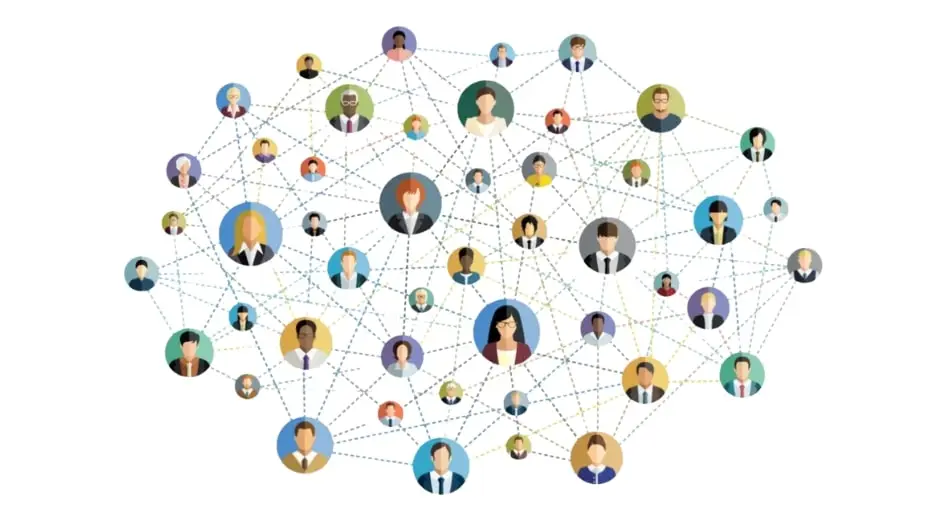Collaborative Ecosystems: Redefining Modern Business Networking
In today’s interconnected global economy, traditional networking is no longer sufficient to thrive. Businesses and professionals are increasingly turning to collaborative ecosystems—strategic networks of interdependent partners—to drive innovation, growth, and sustainable success. Unlike conventional networking, which often focuses on individual relationships or short-term gains, collaborative ecosystems prioritize mutual benefit, shared knowledge, and long-term impact.
Understanding Collaborative Ecosystems
A collaborative ecosystem is a network of organizations, professionals, and stakeholders that work together to achieve shared objectives while maintaining individual autonomy. These ecosystems are designed to foster cooperation, resource sharing, and co-creation of value. According to Forbes.com, companies embedded in strong collaborative ecosystems are more agile, innovative, and resilient compared to those that operate in isolation.
These ecosystems often span industries, sectors, and geographies, combining diverse expertise to tackle complex challenges. The key characteristic of a collaborative ecosystem is interdependence: success is driven not solely by individual performance but by the collective capability of the network.
Benefits of Collaborative Ecosystems
The advantages of participating in a collaborative ecosystem are multifaceted:
Accelerated Innovation: By pooling resources and expertise, ecosystem members can develop new products, services, or solutions more rapidly.
Access to Diverse Markets: Collaborative networks provide pathways to new customers, markets, and geographies.
Risk Sharing: Partners distribute risk, allowing experimentation and innovation without jeopardizing individual stability.
Enhanced Knowledge Transfer: Ecosystems enable learning from peers, industry leaders, and allied organizations.
Improved Sustainability: Shared objectives often include social responsibility, environmental goals, or ethical business practices.
Platforms like Businessforumhub.com facilitate connections among professionals and organizations seeking to join or build collaborative ecosystems, providing tools and insights to strengthen engagement.
Building and Maintaining Collaborative Ecosystems
Creating a successful collaborative ecosystem requires careful planning and ongoing management. Key steps include:
Identifying Complementary Partners: Seek organizations and professionals whose strengths complement your own and align with ecosystem goals.
Defining Shared Objectives: Establish clear goals that benefit all participants and promote long-term collaboration.
Establishing Governance Structures: Implement frameworks for decision-making, conflict resolution, and accountability.
Fostering Open Communication: Transparent dialogue ensures trust, coordination, and continuous learning.
Leveraging Technology: Digital platforms, cloud collaboration tools, and data-sharing systems can enhance efficiency and scalability.
Case Studies in Collaborative Ecosystems
Several industries provide examples of successful collaborative ecosystems. In technology, companies often co-develop platforms or standards, combining complementary capabilities for mutual benefit. Healthcare ecosystems link hospitals, clinics, and research institutions to improve patient care and accelerate innovation.
Insights from Focusmindflow.com highlight how individuals and small businesses can also participate in collaborative networks, leveraging shared knowledge and resources to amplify impact and reach. These case studies show that effective ecosystems enable participants to achieve outcomes that would be impossible independently.
The Role of Leadership in Collaborative Ecosystems
Strong leadership is critical in collaborative ecosystems. Leaders must balance individual goals with collective objectives, ensuring alignment, fostering trust, and resolving conflicts. Key leadership qualities include:
Vision: Clear articulation of ecosystem purpose and long-term goals.
Empathy: Understanding partner needs and perspectives.
Facilitation Skills: Encouraging participation, collaboration, and idea-sharing.
Adaptability: Responding to changing market conditions and ecosystem dynamics.
Effective leaders not only drive performance but also cultivate a culture of collaboration that sustains the ecosystem over time.
Measuring Success in Collaborative Ecosystems
To ensure continued value, ecosystems must be evaluated using both qualitative and quantitative metrics:
Innovation Output: Number of new products, patents, or collaborative initiatives.
Market Growth: Expansion into new geographies or customer segments.
Partner Engagement: Participation levels, contribution quality, and collaboration frequency.
Financial Impact: Revenue growth, cost savings, or shared investment returns.
Regular assessment enables participants to refine strategies, strengthen relationships, and optimize the ecosystem for maximum benefit.
Challenges and Risks
While collaborative ecosystems offer significant advantages, they also carry challenges:
Misaligned Incentives: Partners may have conflicting objectives that undermine collaboration.
Resource Imbalances: Unequal contributions can create tension or dependency issues.
Cultural Differences: Variations in organizational culture, norms, or communication styles may hinder cooperation.
Data Security and IP Risks: Sharing proprietary knowledge requires robust agreements and safeguards.
Mitigating these risks involves clear agreements, effective governance, and continuous monitoring.
The Future of Collaborative Ecosystems
The rise of digital platforms, globalization, and remote work has expanded the potential for collaborative ecosystems. Emerging trends include:
AI-Enabled Collaboration: Leveraging artificial intelligence to optimize connections, identify opportunities, and predict outcomes.
Cross-Industry Partnerships: Breaking down traditional sector boundaries to create innovative solutions.
Sustainability-Focused Networks: Ecosystems emphasizing environmental and social responsibility.
Data-Driven Insights: Real-time analytics to enhance decision-making and ecosystem performance.
Organizations and professionals who embrace these trends will be well-positioned to innovate, grow, and maintain relevance in an increasingly interconnected economy.
Conclusion
In the modern business landscape, collaborative ecosystems redefine the concept of networking. By focusing on interdependence, shared objectives, and collective innovation, these ecosystems enable organizations and professionals to achieve outcomes far beyond what they could accomplish alone.
Leveraging platforms like Businessforumhub.com, learning from thought leaders on Forbes.com, and exploring practical insights on Focusmindflow.com, participants can build and sustain ecosystems that drive growth, innovation, and lasting partnerships. Embracing collaborative ecosystems is no longer optional—it is a strategic imperative for those seeking to thrive in today’s competitive and rapidly evolving marketplace.
Simple Entrepreneurship

Strategic Partnerships: The Hidden Power Behind Business Growth and Lasting Networks
Strategic Partnerships explores how collaboration, trust, and shared vision create strong business growth and redefine networking in the modern economy.

Brand Authenticity: The New Currency of Modern Marketing
Brand Authenticity explores how genuine storytelling, trust, and transparency build lasting relationships and drive success in modern marketing.

Sustainable Investing: Building Wealth with Purpose and Long-Term Impact
Sustainable Investing explores how conscious investors combine profitability with social and environmental responsibility to shape a better financial future.

Adaptive Leadership: Guiding Entrepreneurs Through Constant Change
Adaptive Leadership explores how entrepreneurs can navigate uncertainty, motivate teams, and turn change into strategic opportunity in a fast-evolving world.

Collaborative Mindset: Redefining the Power of Modern Networking
Collaborative Mindset explores how cooperation, shared growth, and mutual trust redefine modern networking and create stronger professional communities.

Emotional Branding: The Secret Language of Modern Marketing
Emotional Branding reveals how powerful feelings shape brand loyalty, influence consumer trust, and build authentic long-term connections in modern marketing.

Financial Agility: The Key to Staying Ahead in Modern Business
Financial Agility explores how businesses adapt, plan, and thrive in volatile markets by mastering flexibility, smart resource allocation, and data-driven finance.













